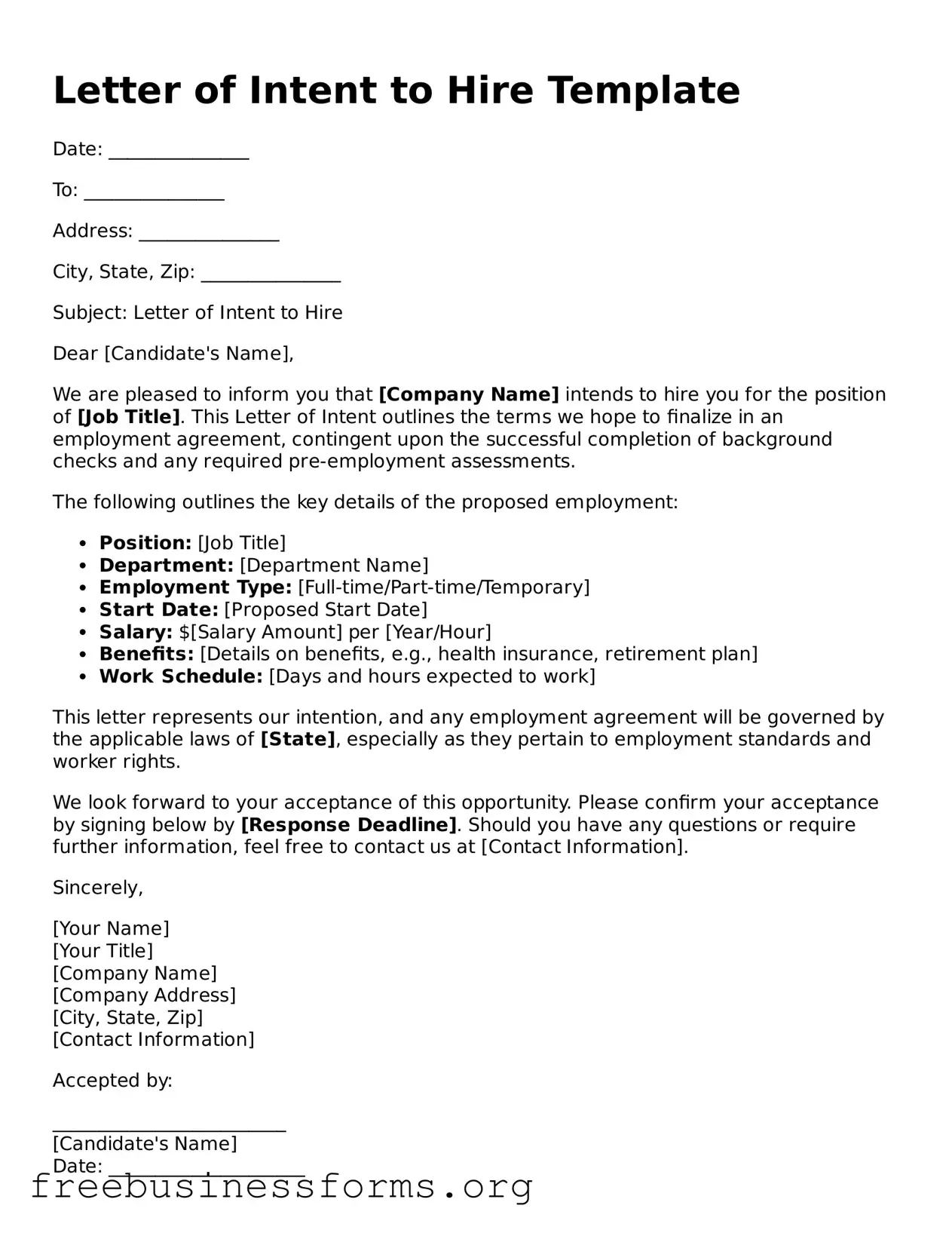Letter of Intent to Hire Template
Date: _______________
To: _______________
Address: _______________
City, State, Zip: _______________
Subject: Letter of Intent to Hire
Dear [Candidate's Name],
We are pleased to inform you that [Company Name] intends to hire you for the position of [Job Title]. This Letter of Intent outlines the terms we hope to finalize in an employment agreement, contingent upon the successful completion of background checks and any required pre-employment assessments.
The following outlines the key details of the proposed employment:
- Position: [Job Title]
- Department: [Department Name]
- Employment Type: [Full-time/Part-time/Temporary]
- Start Date: [Proposed Start Date]
- Salary: $[Salary Amount] per [Year/Hour]
- Benefits: [Details on benefits, e.g., health insurance, retirement plan]
- Work Schedule: [Days and hours expected to work]
This letter represents our intention, and any employment agreement will be governed by the applicable laws of [State], especially as they pertain to employment standards and worker rights.
We look forward to your acceptance of this opportunity. Please confirm your acceptance by signing below by [Response Deadline]. Should you have any questions or require further information, feel free to contact us at [Contact Information].
Sincerely,
[Your Name]
[Your Title]
[Company Name]
[Company Address]
[City, State, Zip]
[Contact Information]
Accepted by:
_________________________
[Candidate's Name]
Date: _____________________
